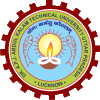It is crucial to investigate persistent and affordable strategies for removing heavy metals from industrial effluent. This study is dedicated to investigating the potential of agricultural waste by-products, specifically sugarcane bagasse, orange peels, and rice husk, as viable sorbents for eliminating heavy metals from wastewater. The research centers on the application of these waste by-products as an environmentally friendly and pragmatic solution. The case study under consideration involves the treatment of wastewater collected from two distinct sources: the Jajmau industrial area of Kanpur city and the common effluent treatment plant (CETP) of Unnao city in Uttar Pradesh, India. In this scientific investigation, we comprehensively evaluate the efficacy of sugarcane bagasse, orange peels, and rice husk in removing heavy metals from the collected wastewater samples. These waste materials have shown promise in prior studies due to their abundant availability and inherent adsorption properties. The utilization of such waste by-products not only addresses environmental concerns associated with their disposal but also offers a sustainable approach to mitigating heavy metal contamination in industrial wastewater, aligning with eco-conscious principles.
To achieve our research objectives, we conducted adsorption studies on the collected samples using sugarcane bagasse, orange peels, and rice husk, while varying parameters such as dosage, pH, and contact duration to define the most effective conditions for metal removal. For the Jajmau wastewater sample, at a dosage of 1.00 gm, the maximum removal efficiency for Cu, Cr, Ni, Cd, and Zn using orange peels (OP), rice husk (RH), and sugarcane bagasse (SCB) were 84.90%, 90.45%, 86.21%, 98.00%, and 74.11%,
respectively. Furthermore, at a pH value of 5, 6, 5, 7, and 7, the maximum removal efficiency of Cu, Cr, Ni, Cd, and Zn using OP and RH were 82.81%, 76.80%, 76.16%, 78.46%, and 78.59%, respectively. The highest removal efficiency for Cu, Cr, Ni, Cd, and Zn using OP, RH, and SCB occurred at contact times of 120, 60, 120, 60, and 80 minutes, respectively.
In the case of the CETP wastewater sample, the maximum removal efficiency for Cu, Cr, Ni, Cd, and Zn, at a dosage of 1.00 gm, using OP, RH, and SCB were 84.90%, 90.45%, 86.21%, 98.00%, and 74.11%, respectively. Additionally, at pH values of 5, 6, 5, 7, and 7, the maximum removal efficiency of Cu, Cr, Ni, Cd, and Zn using OP and RH were 82.81%, 76.80%, 76.16%, 78.46%, and 78.59%, respectively. The highest removal efficiency for Cu, Cr, Ni, Cd, and Zn using OP, RH, and SCB was observed at contact times of 120, 60, 120, 60, and 80 minutes, respectively.
Title
Removal of Heavy Metals from Industrial Effluents using Low Cost Natural Adsorbents
Year Awarded (Blank if Not Awarded)
2023
Awarding Body
Type
Master of Technology
Place of Work
E-Mail
Co Guide (Non IET)
Prof. A. K. Shukla
Roll No
2100520975008
Registration Date
Area of Research
Environmental Engineering

